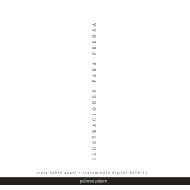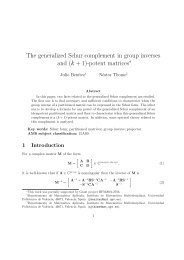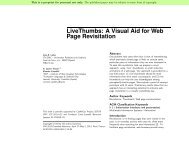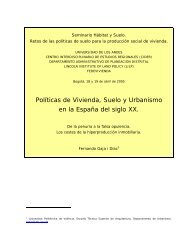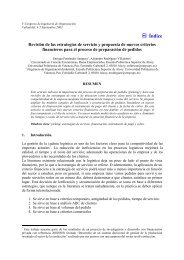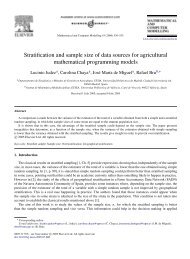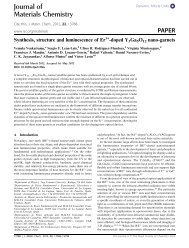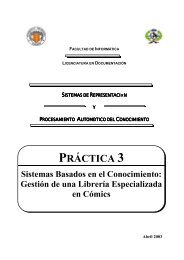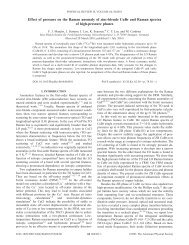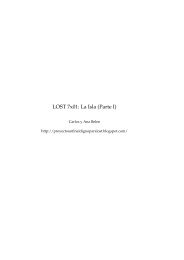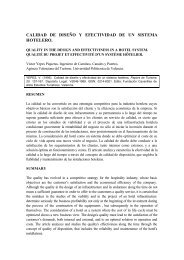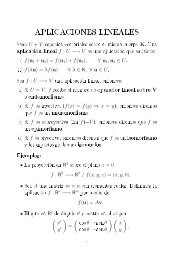The architectural morphology of corbelled dome houses
The architectural morphology of corbelled dome houses
The architectural morphology of corbelled dome houses
Create successful ePaper yourself
Turn your PDF publications into a flip-book with our unique Google optimized e-Paper software.
272<br />
Earthen Domes and Habitats<br />
Fig. 13: Open unit with terrace (mastaba) Fig. 14: Internal court in a unit <strong>of</strong> Twall Dabaghein<br />
Bathroom, ‘Marhad’ or ‘Baet Al-mai’<br />
Traditional <strong>houses</strong> are not always equipped with bathrooms, and when present<br />
they tend to consist <strong>of</strong> a hole in the ground inside a special compartment<br />
(<strong>dome</strong> or flat ro<strong>of</strong>) or in the livestock area, in this case protected by a<br />
C-shaped wall, varying in height from 1 to 1.5 m. In wealthier homes a bath<br />
(hammam) can be found along with clay containers for pouring water.<br />
Kitchen<br />
<strong>The</strong> Syrian house has various spaces for the preparation, storage and consumption<br />
<strong>of</strong> food. <strong>The</strong> tableware and supplies are placed in a specialized unit<br />
(matbakh), where today, in addition to traditional earthen shelves, wooden<br />
shelves and in rare cases a refrigerator can be seen. Another storage space,<br />
used to preserve foodstuffs and fruit for winter, may be located in a separate<br />
room (baet al- muna or al-fejjeh) or else in a part <strong>of</strong> the main room separated<br />
by a wall <strong>of</strong> the cell where food stocks are placed in small holes (kuara).<br />
Traditionally, meals are prepared outside according to the nomadic custom.<br />
However, today many families use gas stoves and prefer to cook indoors.<br />
Firewood is stored in the same place as the dishes, or in a separate compartment<br />
(mustauda ‘hatab).<br />
In each unit there is an oven (mauqed, dfeeh or kanun) for the daily preparation<br />
<strong>of</strong> bread. <strong>The</strong> traditional oven is a simple circular base in clay, about<br />
60 cm high, with a cavity in the centre for the burning <strong>of</strong> straw and small<br />
branches. <strong>The</strong> cavity is covered by a convex metal disc, on which a layer <strong>of</strong><br />
dough <strong>of</strong> variable thickness is placed. <strong>The</strong> oven can be outside, consisting in<br />
this case <strong>of</strong> a cylindrical base made <strong>of</strong> stone and earth, with an upper cavity<br />
shape where the dough is cooked and below a space for burning wood. Meals<br />
are generally consumed in the main house.<br />
Courtyard, ‘Haush Sahn’<br />
This is the courtyard around which the various functional cells for housing<br />
are arranged, surrounded by an earthen fence wall (sur) or by the constructions<br />
<strong>of</strong> the dwelling. It is a highly frequented space where one can find<br />
small fenced <strong>of</strong>f areas or shelters for animals, small <strong>dome</strong>s used as chicken<br />
coops (qunn) and in some cases a fireplace for the preparation <strong>of</strong> meals. At<br />
the centre <strong>of</strong> the courtyard or in an area adjacent to the house there is <strong>of</strong>ten<br />
a well (be’er) supplying the family with drinking water. <strong>The</strong> well can be simply<br />
a hole in the ground covered by a flat stone, or it may have an above-ground<br />
base built from stone or from mud and stone, dug by hand, from which water<br />
is almost always hand drawn by a system <strong>of</strong> pulleys.<br />
In most villages with an abundance <strong>of</strong> water, short-stemmed plants are<br />
grown in a small orchard-garden (hakura) in the courtyard. In the past it was<br />
commonplace for the inhabitants to sleep outside in the courtyard on summer<br />
nights on beds consisting <strong>of</strong> an earthen base supported on a mattress <strong>of</strong><br />
canvas sacks filled with straw.



